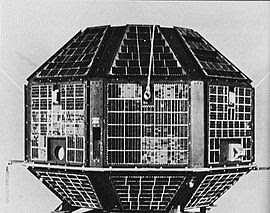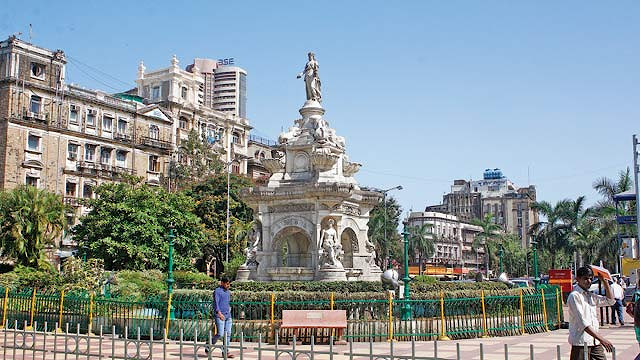INDIA AND ASTRONOMY- A CLASSIC BOND
INDIA AND ASTRONOMY - A CLASSIC BOND
Note-I am extremely sorry for the month long hiatus due to examinations. Sincere apologies.
Introduction
Whenever a child in India studies mathematics he comes across a quintessential Indian man dressed in a Dhoti with a typical ponytail. The man who is now known as Aryabhata laid foundation for Astronomy and Mathematics at an age of 23. We can now look around One and half Millennia after this event.
Till date in many urban and rural areas, one of the favourite pastimes of a person regardless of his/her age is to have a glimpse of the stars and planets. The Universe has been a topic which has been covered greatly in Indian Mythological and Scientific literature.
In this post I would be writing about our history and heritage which continues in the field of Astronomy and Astrophysics.
Humble beginnings-
INCOSPAR (1962-1969) - An acronym for Indian National Committee for Space Research this organisation was formed in 1962 by Dr Vikram Sarabhai in 1962.
It had all Stalwarts of Science in our country like Dr Homi Bhabha and His Excellency Dr Abdul Kalam as its members. It took over the reins of the Department of Atomic Energy after its formation. It set up the Thumba Equatorial Rocket Launch Station also known as TERLS. Dr Abdul Kalam was a part of the initial team of rocket engineers forming the INCOSPAR.
The first rocket of India being transported using a bicycle.
ISRO (1969- present)
Baby steps-
An acronym for Indian Space Research Organisation, It initiated and executed India's space program due to geopolitical and economic reasons.
In 1975, ISRO collaborated with the space organisation of the Soviet Union to create history by launching India's first satellite. It had a mission duration of approximately 4 days which it achieved in one go. In 1992 it returned to the Earth's atmosphere.
The Aryabhata satellite- it had a launch mass of 360 kilograms.
Launch Vehicles
ISRO has had a diverse launch vehicle fleet. The SLV (Satellite Launch Vehicle) and the ASLV (Augmented Satellite Launch Vehicle) are decommisioned whereas the PSLV (Polar Satellite Launch Vehicle ), GSLV (Geosynchronous Satellite Launch Vehicle) are still used.
The Fleet of Launch Vehicle on a glance.
IRNSS :Lesser known Accomplishment
GPS is something everyone has grown used to in the last decade. A technology we regularly bank on has been made for India with state of art equipment but this is not largely famous.
IRNSS- standing for Indian Regional Navigation Satellite System, it was envisaged during the Kargil war when India was not permitted to use the US owned GPS due to obvious reasons.
It has an accuracy of 0.1 m for military use and 10 m for normal civil use and has a range up to 1500 Kilometers from Indian borders.
A large step in India's self reliance program, it is one of the lesser known feats which envisages indigenization in navigation and positioning.
Attempts to promote astronomy and astrophysics
Our country has successfully promoted science to even children in far-flung and desolate areas in hope to make their lives along with the country's future bright. IUCAA is one of the organisations which has become a household name for enthusiasts in the field of science.
IUCAA- Inter-University Centre for Astronomy and Astrophysics
Nestled in the lush green campus of Savitribai Phule Pune University, this institute is a great hit between students in and around the city of Pune. Formed for promoting growth of groups and clubs in the field of astronomy and astrophysics, it is an autonomous institution.
Located at a stone's throw away from the National Centre for Radio Astrophysics which possesses the Giant Metrewave Radio Telescope it is perfect for research.
It has popularized science to great extent and hosts educational facilities for Amateur Astronomers along with schoolteachers and students.
Trivia
Water on the surface of the moon was discovered by ISRO .
Countries like Great Britain, Germany, Republic of Korea(South Korea), Japan, France and even the United States of America have launched satellites using ISRO's assistance.
India possesses the largest fleet of remote sensing vehicles.
ISRO has a commercial wing known as Antrix Corporation with a staggering revenue of 18.6 billion rupees.
ISRO's Mars Orbiter Mission cost one-third of the famous Hollywood movie Gravity's budget.
The transportation cost is 10 rupee per km, similar to a cab-fare.
Conclusion
As the 'Mangalyaan' or the Mars Orbiter Mission completes four years in orbit and two British satellites are launched recently, ISRO is preparing for its highest density period of 19 launches in 7 months.
ISRO has been questioned for its existence as people wonder why a third world country like India is indulging in space research even with many problems it faces, it has developed some areas to a great extent and has given employment to many.
It has been regarded as the best space organisation after NASA.
Many people did not even recognize the ISRO as a space agency before the Mangalyaan Mission.
More than financial compensation, they need appreciation and commendation which motivates them and I hope that this would be done in the future








Great work. Keep going! The more you write the more you learn. :)
ReplyDeleteGood! Better! Best!!
ReplyDeleteThank You!
ReplyDeleteRegards,
Famebythisname
Great written
ReplyDeletePls write one on thi topic science better than astrology